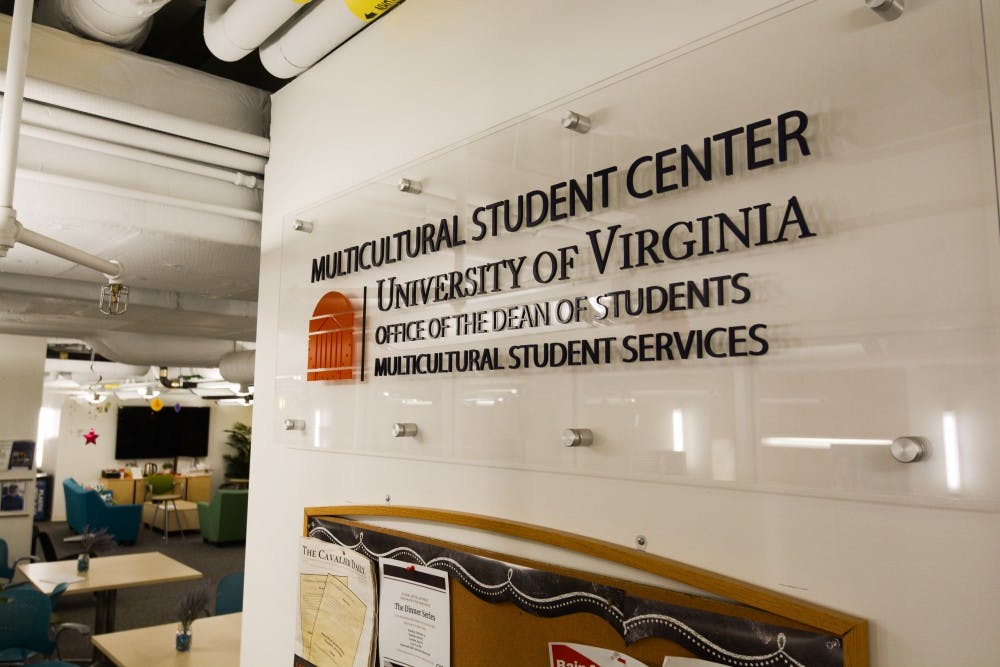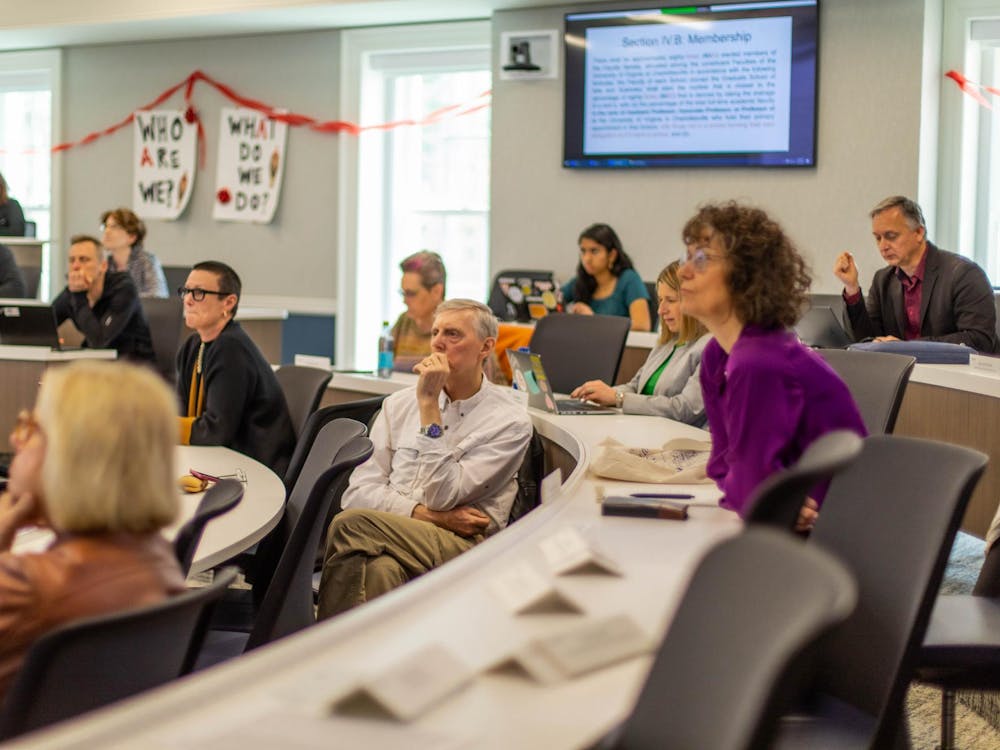For front desk assistant and second-year College student Alberto Serra, the Multicultural Student Center is a place he can go at any time and be greeted by both familiar faces and make friends with new ones. Located in the basement of Newcomb Hall, the MSC at its busiest is abuzz with the sounds of music, conversation and laughter among students and fingertips against keyboards. MSC staff work to make sure the space is not just another study spot for students, according to Serra.
“Usually, we have music playing and students talking to each other and doing work, but also really talking to each other,” Serra said. “There’s a lot of laughing, and I mean obviously that changes if there’s events or if the MSC is closed it’s much more quiet because of the speaker, but usually it’s very lively and talkative but also not super loud.”
Founded in Oct. 2016, the MSC offers a space for marginalized or underrepresented communities — which comprise roughly a third of the University community — yet the center hits its maximum capacity at 49 people. The center is led by Natalie Romero, student director and third-year College student, who said that the space oftentimes lacks the square footage necessary to accommodate the various communities it serves.
“The Multicultural Student Center and the LGBTQ center serve a fifth of the population plus, and the space only holds fifty people, and the LGBTQ Center holds even less,” Romero said. “There are days when people are looking for a space to hang out and chill, and it’s full, so they don’t come in here or they leave.”
Vilas Annavarapu, third-year College student and chair of the Asian Leaders Council — an umbrella organization with 14 Asian/Asian Pacific American constituent organizations — said that the MSC provides a haven for underrepresented communities at the University. This haven replicates the University’s ideals of active student interaction and dialogue. However, the space is tucked away in the windowless basement of Newcomb — an invisible and non-central space on Grounds.
“Iconically, you think of the Lawn as a space that’s public, well-positioned, supposed to be accessible to all different students — a space where faculty and students interact with one another,” Annavarapu said. “That’s what U.Va. constantly parades as the idyllic space for its students. The story for minority students and students of color is quite different.”
Calls for expanding the MSC
The discrepancy between the minority student population at the University and the space available in the MSC has inspired Latinx members in the University to call for their own space on Grounds. Romero said that the Kaleidoscope Room, located on the third floor of Newcomb, holds potential to transform into a Latinx student center — however, when she pitched the idea to faculty last summer, she was quickly shot down.
“I was told, basically, that getting a Latinx student space would then mean that other groups would also want their own spaces, and that’s something that wasn’t feasible … why were we dividing the students, essentially,” Romero said. “Bunching us all up together isn’t celebrating our differences. Our differences do need to be celebrated.”
Upstairs from the MSC, the Kaleidoscope Room originated in 2004 as the Center for Cultural Fluency. Borne out of efforts spearheaded by the Minority Rights Coalition — which oversees several minority student organizations at the University — the center was established in the wake of a racially-charged year that culminated in the racially-motivated assault of former Student Council candidate Daisy Lundy. Lundy, a Korean and African American student, was forcefully slammed into the wheel of her car by a man who also made a racial slur about her candidacy.
Initially envisioned to be a space serving the same purpose as the current MSC — one that would promote cross-cultural dialogue and a safe space for underrepresented communities — the Center for Cultural Fluency is no longer in existence. The Kaleidoscope Room was officially repurposed in 2010 — today, the space is like any other reservable room in Newcomb Hall.
Vicki Gist, assistant dean of students and the director of multicultural student services, said in an email statement to The Cavalier Daily that she has not had any in-depth conversations about the creation of a Latinx student center, although she is aware of the desire that persists within the community.
“Many higher education scholars have conducted research that shows it is beneficial for students of color on predominantly white campuses (and underrepresented/marginalized students in general), to have multiple places where they feel validated and can build community, including cultural centers.” Gist said. “From what I’ve seen, the Multicultural Student Center has become one such place on grounds, and I regularly see Hispanic/Latinx students utilizing the space.”
The lower level of Newcomb houses a variety of student groups — The Cavalier Daily, the MSC, the LGBTQ Center and the University Guide Service. Due to renovations, U-Guides moved in January 2018 from Pavilion VIII to what was formerly the Media Activities Center, a computer room in the Newcomb basement.
“We’ve been asking to be added to the computer room for so long,” Romero said. “U-Guides do allow other people to be in this space, but you can’t book this space ... It used to be a computer room, so you’d see students in here on their computers all the time.”
Romero said that aspirations to expand the MSC into other unused areas in Newcomb have gone unrealized.
“I’ve mentioned [expanding the MSC], but I really didn’t feel like I was going to get anywhere, so I didn’t try to pursue that conversation because I was getting closed doors,” Romero said.
Al Ahmed, a fourth-year Curry student and president of the Muslim Student Association, said he has run into the same closed doors as the MSA has pushed for more prayer space for Muslim students around Grounds. Muslim students currently have the option to pray in the Meditation Room on the fourth floor of Newcomb Hall, but the space can oftentimes get overly crowded when students try to pray in between classes. Ahmed says that the MSA has continually called for expanded on-Grounds prayer space over the last year and a half, but the University has yet to take concrete action.
“It’s been like one person to the next,” Ahmed said. “First, I talked to Dean Gist about it. Then, she said she talked to her higher-ups. [I talked to] Dirron Allen and different administrators and deans … They’ve been saying ‘we’re working on it, we’re considering you guys, we’re brainstorming possible spaces,’ and that’s been the response we’ve been getting for the past year.”
Space isn’t always physical
Joseph Malasa, a fourth-year College student and president of the Organization of Young Filipino Americans, said the University sometimes neglects to advocate for the spatial needs of minority communities.
“When we think about the Lawn rooms and fraternity houses that have these endowed and alumni-given spaces, when we think about the University — not really blaming the University — there hasn’t been enough fundraising for people of color in order to feel like they have a space where they belong,” Malasa said, in reference to the attempts of Latinx students to have their own student space on Grounds while receiving minimal support from the University.
However, Malasa explained that the issue transcends physical space and that the University must acknowledge and advocate for the needs of minority students.
“It’s not so about who deserves the space or who doesn’t, it’s how can we build an institution that can understand the needs of multicultural students,” Malasa said. “Even multicultural students have a lot to learn. I’m still learning every day about how to navigate these large systems — how to get my micro needs into the macro conversation about what the University thinks is important for students.”
Annavarapu echoed this sentiment, saying that there exists insufficient academic space for students of color. In Oct. 2018, the ALC released a report entitled “We Are Not Invisible: A Report for Academic Reform.” Of the various concerns detailed in the report, the ALC in particular calls for the creation of diverse academically oriented spaces, namely through the establishment of an American Studies department. Departmental status would allow students more flexibility and choice in choosing courses related to Asian-American Studies. Currently, the College only has an American Studies program.
“We don’t place enough value on academic space for students of color — what does it mean when you create classes or departments that really focus on ethnic studies? What are the spaces and academic communities you’re creating there?” Annavarapu said. “U.Va. is really really bad about both of those things, and there needs to be active efforts to think consciously of why these spaces are important, and what meaningful steps we can take to make them more accessible.”
What the MSC offers
Although some students hope for increased University involvement in Multicultural Student Services, they are grateful for the existing designated space for student activities. Both Romero and Malasa agree that catering from outside companies in the MSC is important to events organized by different cultural groups. Romero says that allowing outside catering is necessary to authentically celebrate cultures represented in different events.
“U.Va. catering does not meet the cultural diversity of the students and their food,” Romero said. “If we want food that isn’t U.Va. catering stuff, then we can’t really order it. We don’t eat those foods, or the way [U.Va. catering is] going to make it isn’t the way that the local catering group will make pupusas.”
Beyond freedom of food choices, Romero and Malasa believe that the MSC most importantly offers validation to minority students who may feel that their concerns and needs aren’t heard elsewhere at the University. Although Dean Gist said the MSC is not the only safe space for minority communities on Grounds, Romero disagrees.
“We don’t have safe spaces on Grounds,” Romero said. “No matter how much U.Va. wants to say that we do — we don’t. That’s just reality.”
Malasa said an inclusive University — one in which communities all feel secure — requires policy that enshrines the needs of minority students while providing those students with the resources necessary to making their voices heard.
“Organizations with privilege, institutions with privilege, and other students that have the privilege to feel like they have enough space are able to say ‘Do we really need more space for multicultural students?’ — that leads to a lack of a policy solution,” Malasa said. “It’s not that there isn’t a policy solution that can be made — the question is why aren’t we allowing multicultural students to be given resources so they can figure out a better policy?”







